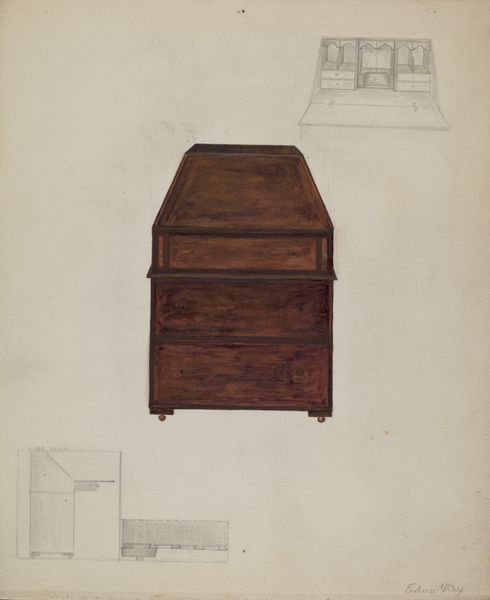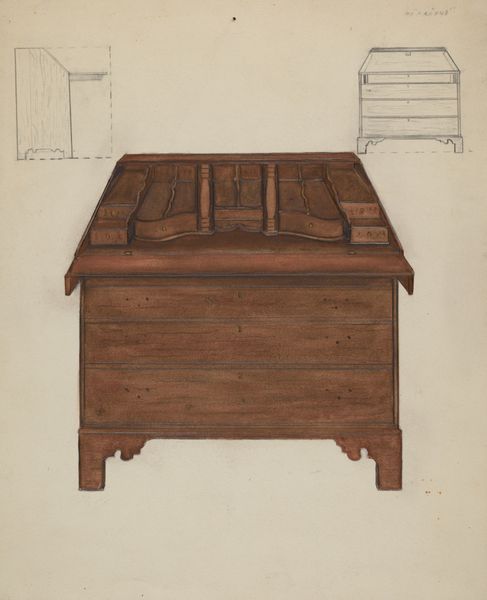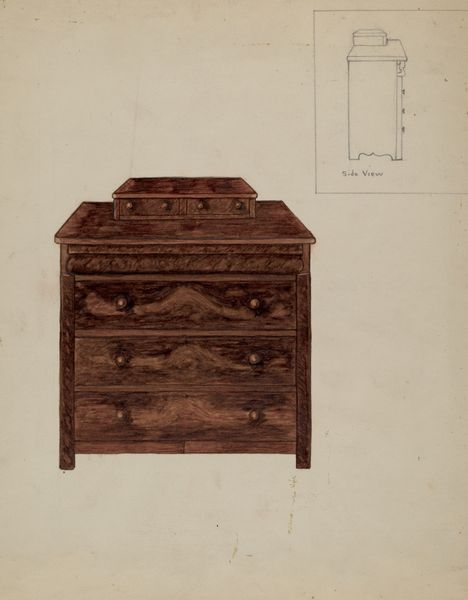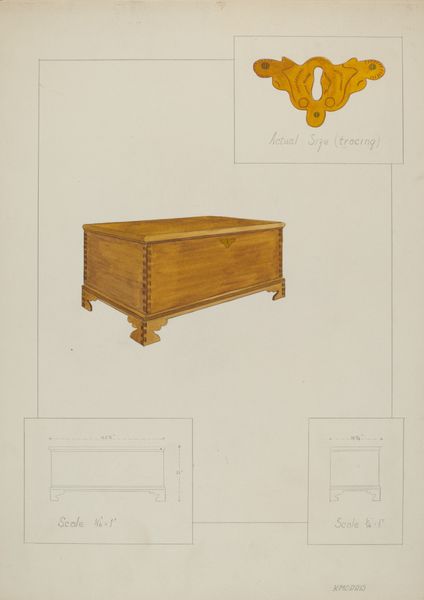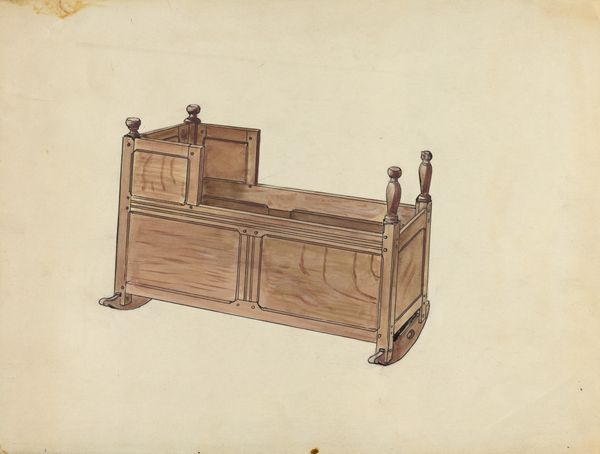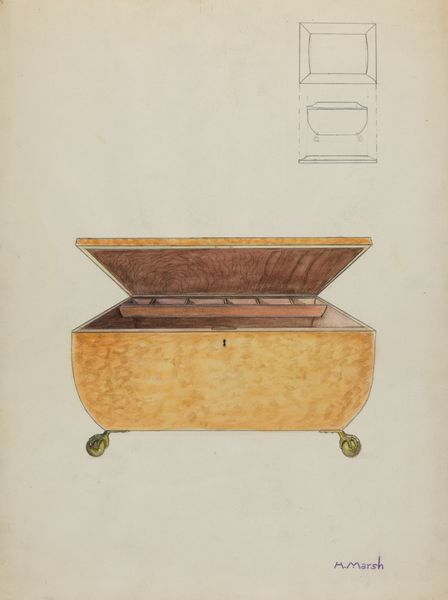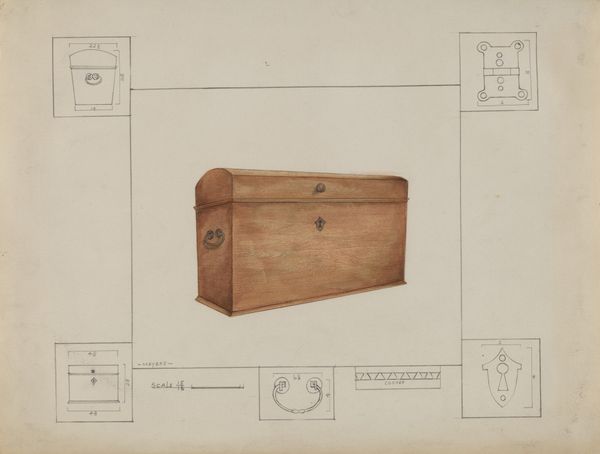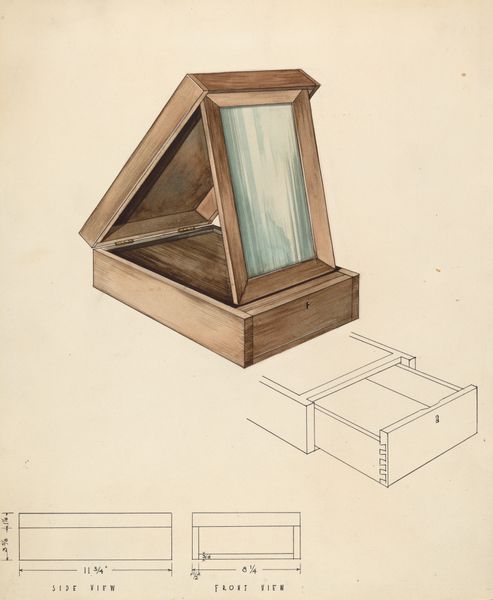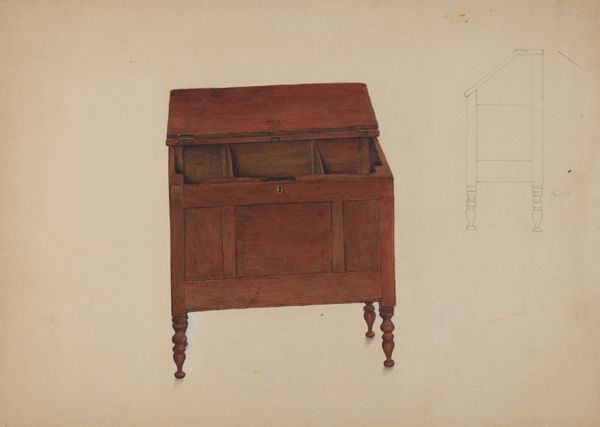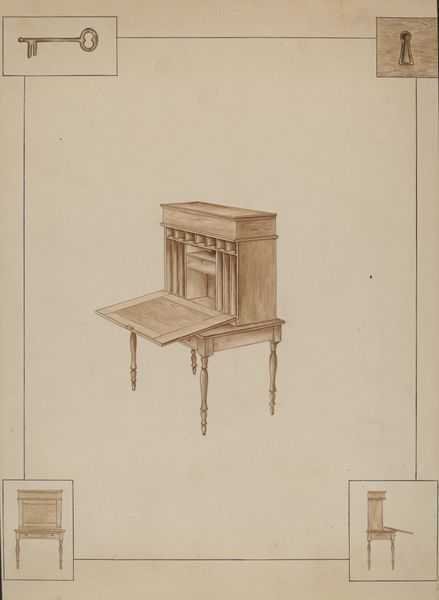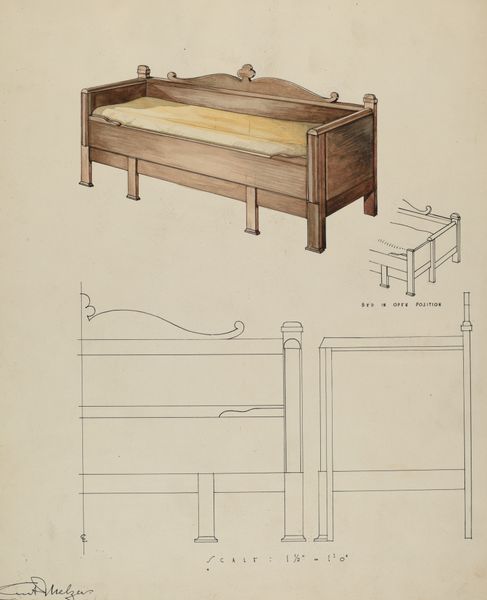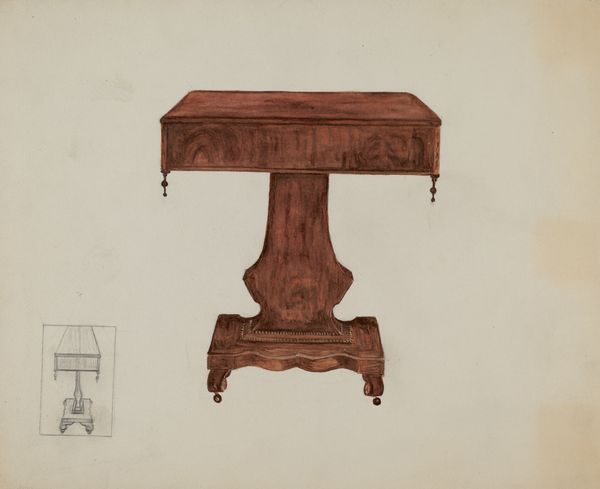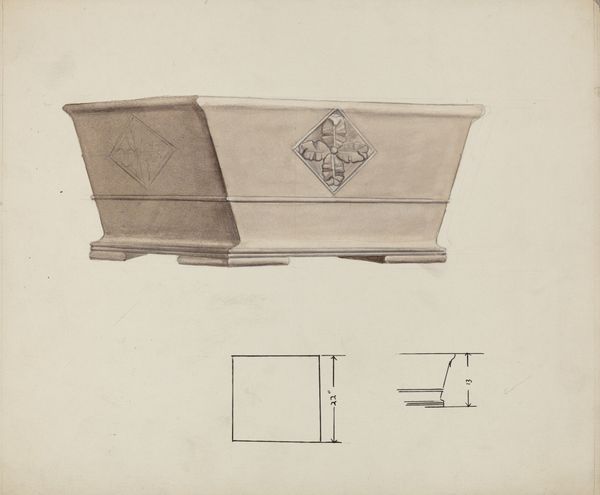
drawing, mixed-media, paper
#
drawing
#
mixed-media
#
paper
Dimensions: overall: 30.5 x 23 cm (12 x 9 1/16 in.) Original IAD Object: 26"long; lid 16"wide; 19"high
Copyright: National Gallery of Art: CC0 1.0
Curator: Let's turn our attention to this piece—a mixed-media drawing on paper by Henry Meyers, circa 1936, titled "Wine Cooler." It's deceptively simple at first glance. Editor: My initial thought is warmth, not exactly the cold associated with its title! The reddish-brown tones give it an inviting, almost cozy feel. I'm also struck by how precise and technical the drawing is. Curator: The drawing really speaks to the confluence of design and utility, particularly in the context of American domesticity during the 1930s. Wine, in a society stratified by Prohibition, then its repeal, signals a return to normalized social hierarchies. This object is complicit in these power structures. Editor: Absolutely, and examining Meyers' approach—using both drawing and mixed-media—we see a blend of industrial design with artisanal skill. It makes me wonder about the status of labor during the period. Is this object meant for mass production or bespoke creation, and what does the artistic process tell us about material access and class divisions? The dimensions sketched on the top confirm it as a plan of fabrication, rather than art per se. Curator: Yes, and note how the object’s purported function– cooling wine–serves a patriarchal social order in which women may be less directly invited into scenes of relaxation or alcoholic beverage. Is this meant for men? Is it meant to entertain the female gaze and to perform ease of use? These social codings need to be unpacked. Editor: It prompts thinking about labor—the person conceptualizing this wine cooler versus the people involved in sourcing materials and production. Were there other considerations: for example, trade agreements that shaped how this product was placed within the larger networks of consumerism. Curator: Right, by examining an object like this, we gain insight into material culture during this period, reflecting gender roles, power dynamics, and class distinctions prevalent during the Depression era. Editor: Definitely, thinking through this cooler gives way to the deeper workings behind daily, material existence. The artistry becomes clear through social and economic awareness.
Comments
No comments
Be the first to comment and join the conversation on the ultimate creative platform.
